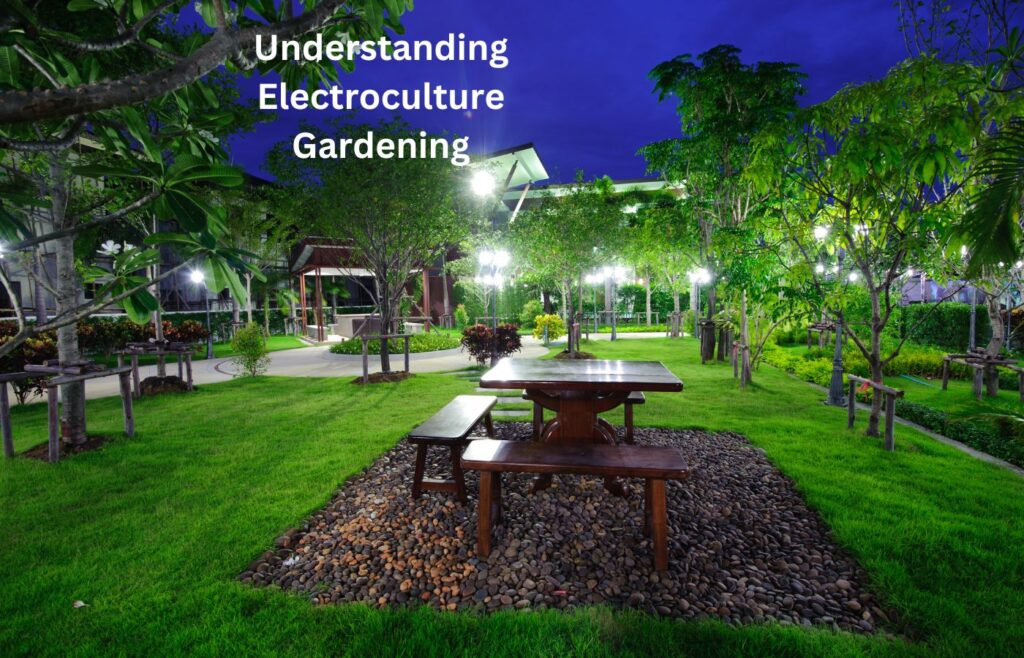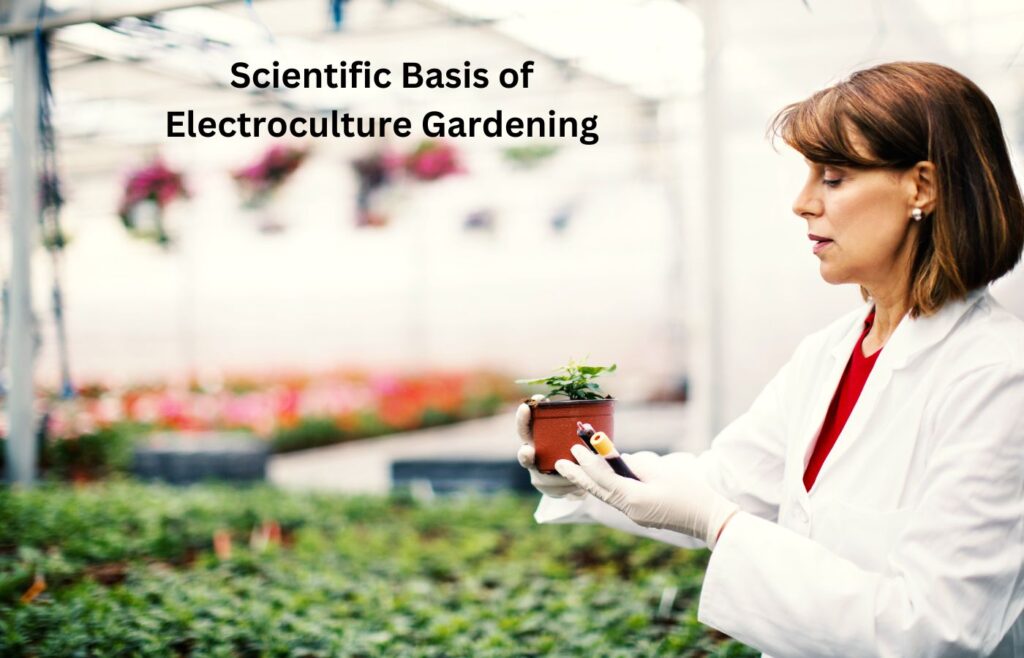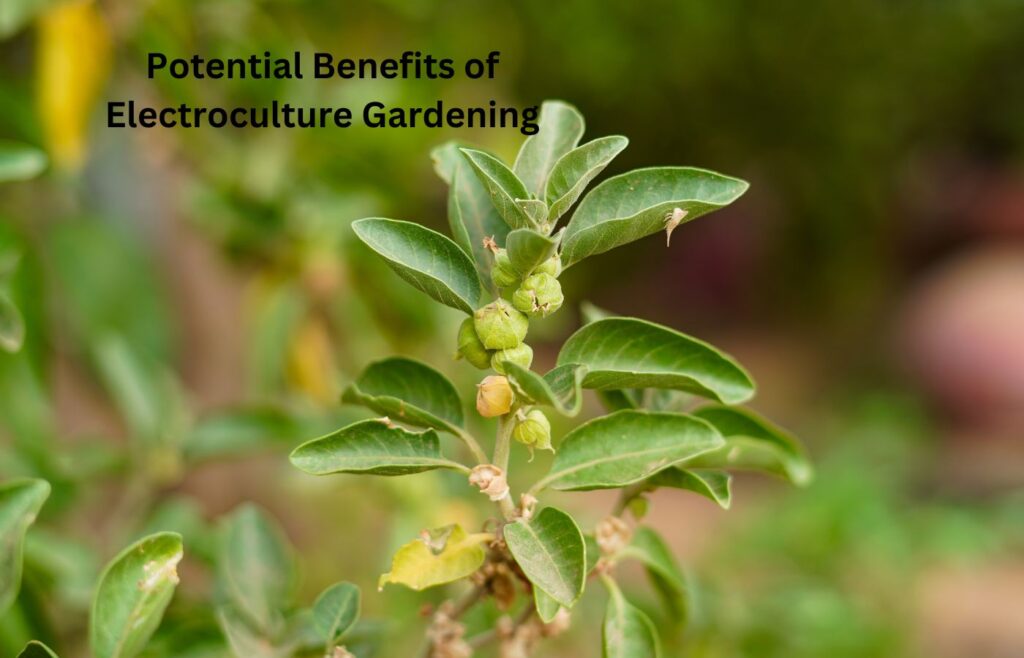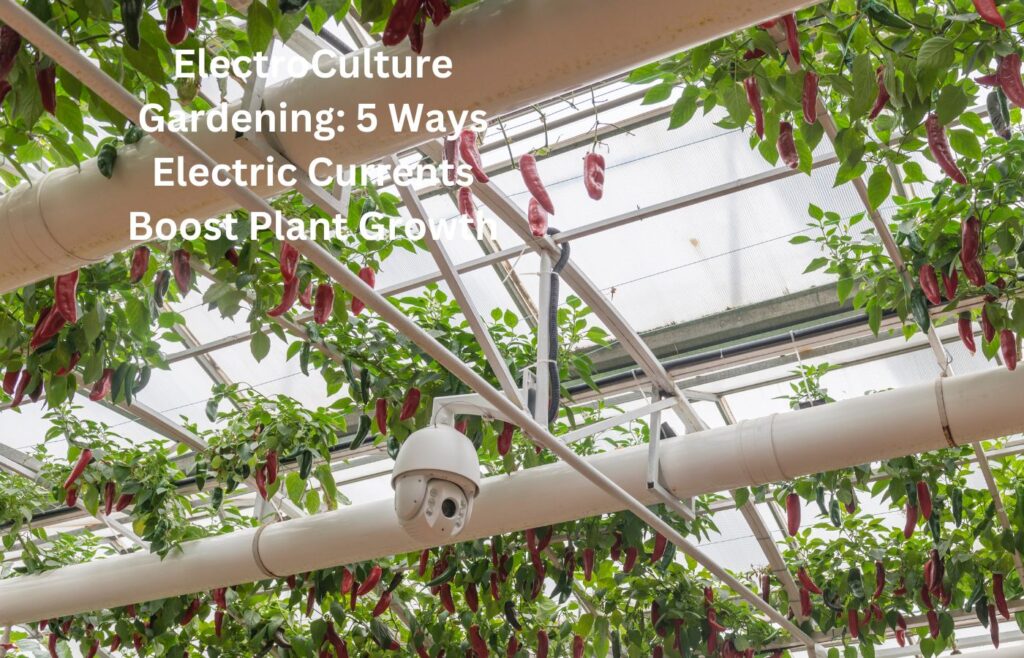Introduction
Electroculture gardening is an experimental form of agriculture that employs electric currents and electromagnetic fields to promote plant growth and increase crop yields. By applying electric currents or fields directly to soil, plants, or surrounding atmosphere, electro culture aims to enhance nutrient absorption, root development, photosynthesis, and overall plant health, and reduce chemical fertilizers or pesticide usage – making this farming ideal for sustainable and eco-friendly farming operations.
Electroculture’s history dates back to the late 19th century when pioneers explored its effects on plant growth. Due to technological advances and an emphasis on sustainable agriculture, electroculture gardening has recently seen a resurgence.
While electroculture holds great promise, it also presents unique challenges and controversies, such as inconsistent results, lack of standardization, and safety concerns. Still, this practice offers gardeners and farmers a rare chance to experiment with novel methods that might contribute to sustainable agriculture in the future.
In this article, we will investigate the scientific foundation, potential benefits of electroculture gardening techniques, and any challenges or controversies surrounding them.
Understanding Electroculture Gardening

Electroculture gardening applies electric currents, magnetic fields, or other electromagnetic energy sources to boost plant growth and crop yields. It encompasses various methods that may be applied alone or collectively, such as electrified soil, plants, and even an electrified atmosphere.
Electric Soil:
Gardeners looking to influence root growth and nutrient uptake with an electric current can apply low voltage current directly to their soil, using conductive wires, plates, or rods buried into it to apply an electric current directly. This may stimulate microbial activity and solubilize nutrients more easily so plant roots can access essential vitamins.
Electrified Plants:
With this technique, electrical currents or magnetic fields are applied directly to plants to promote their growth and development. This may involve placing copper wires around plants or suspending magnets above them – using electric currents can increase cellular communication, foster root development, and strengthen resistance against environmental stressors.
Electric Atmosphere:
Manipulating electromagnetic environments around plants can indirectly impact their development, including using copper coils or spirals near plants to create magnetic fields that encourage photosynthesis and nutrient uptake by stimulating photosynthesis and absorption processes.
Electroculture gardening offers several potential advantages, including increased crop yields, enhanced plant health, and resistance to diseases and pests. While its results may vary depending on factors like plant species, environmental conditions, and specific methods employed, electroculture gardening shows promise.
Electroculture gardening offers gardeners and farmers an exciting opportunity to experiment with innovative techniques that may lead to more eco-friendly, effective agricultural practices.
History of Electroculture

Electroculture’s origins date back to the late 19th century when researchers began experimenting with using electricity in agriculture. Scientists and inventors experimented to understand how electric currents might influence plant growth and increase crop yields.
Francis Darwin was among the early pioneers of electroculture and studied its effects on plant germination and growth during the late 19th century. However, electroculture began gaining more traction during the early 20th century.
Early 20th-century European researchers explored electroculture, experimenting with various ways of applying electricity to plants and soil. One such pioneer was British inventor Justin Christofleau, who in 1917 patented an electroculture technique using copper spirals to increase crop yields and plant health. Christofleau claimed this approach had resulted in significant yield increases and improvements.
Over the 20th century, electroculture became an area of study among researchers and farmers worldwide, who conducted numerous experiments and published their results despite some mixed results and some skeptical critics. Electroculture thus continued to remain an area of investigation for decades to come.
Over recent years, technological advances and an increase in sustainable agriculture have resulted in an upsurge in electroculture experimentation. Modern experiments focus on fine-tuning the application of electric currents and electromagnetic fields to maximize benefits while mitigating risks.
Electroculture remains a niche field with the potential for further advancement, necessitating research and experimentation to establish standard procedures and fully comprehend how electroculture affects plant growth and health.
Scientific Basis of Electroculture Gardening

Electroculture is founded on the notion that electric currents and electromagnetic fields can positively influence plant growth and development. Plants respond to environmental stimuli like light, temperature, and soil conditions; electroculture uses electric forces to enhance these responses for healthier crops with greater productivity.
Electroculture relies upon several key scientific principles, including:
Cellular Communication:
Plants use electrical signals to communicate within themselves and with neighboring plants, and electroculture may help enhance this communication, leading to enhanced coordination of growth and defense responses.
Nutrient Absorption:
Electric currents can alter soil ions’ movement and thus nutrient availability and uptake by plant roots, leading to better growth and overall plant health. This could contribute to improved growth.
Root Development:
Electroculture can promote root development, allowing plants to access water and nutrients more effectively and contributing to robust plant development and productivity. Stronger roots enable greater access to these vital resources for stronger plant development.
Electromagnetic fields facilitate photosynthesis by increasing energy conversion efficiency within plant cells, leading to more robust plant growth.
Electroculture may help plants withstand environmental stressors like drought, extreme temperatures and pests more effectively and produce resilient crops.
Studies have demonstrated the beneficial effects of electroculture on plant growth and yield, although individual results may vary based on factors like plant species, environmental conditions and methods employed. Further investigation must take place to establish clear guidelines and practices for electroculture.
Electroculture’s scientific basis lies in its potential to affect various physiological processes in plants and thus provide an innovative method to increase agricultural productivity and sustainability.
Potential Benefits of Electroculture Gardening

Electroculture gardening offers many potential advantages for amateur and professional farmers, including improving plant growth and crop yield through electric currents and electromagnetic fields. Though electroculture remains an experimental field with varied outcomes, it presents interesting opportunities for those interested in innovative agricultural practices.
Increased Crop Yields:
Studies and anecdotal evidence suggest that electroculture may help increase crop yields substantially by stimulating plant growth and improving nutrient uptake, leading to larger harvests.
Electroculture may help improve plant health by strengthening resistance against diseases, pests, and environmental stressors such as soil moisture loss. Healthier plants often produce higher quality produce over longer seasons.
Reducing Chemical Consumption:
Electroculture may provide natural protection from diseases and pests, decreasing reliance on chemical fertilizers and pesticides while supporting more eco-friendly agricultural practices.
Improved Soil Quality:
Electroculture techniques such as applying electric currents to soil can enhance fertility and microbial activity to create healthier plant growth conditions.
Electroculture systems can be cost-effective once set up. Their relatively inexpensive operation makes them attractive options for gardeners and farmers looking to increase productivity without incurring large ongoing expenses.
Electroculture provides a new, experimental approach to gardening and farming, allowing individuals to discover innovative solutions while contributing to an expanding body of knowledge.
Though electroculture gardening offers considerable promise, its benefits must be approached cautiously and open to experimentation and adaptation based on results. Close observation and adjustments can maximize benefits while contributing to more efficient and sustainable agricultural practices.
Practical Tips for Electroculture Gardening
Electroculture gardening uses electric currents and electromagnetic fields to boost plant growth and yield, offering innovative gardening tips with potential crop enhancement benefits. If this approach interests you, here are a few practical guidelines to get you underway:
Research and Planning:
Before diving into electroculture gardening, research various methods and techniques and their potential effects on your plants. Determine which approach aligns best with your goals as well as the specific needs of your plants.
Select the Appropriate Equipment:
Depending on your method, equipment such as copper wires, coils or rods, and low-voltage electric current generators may be needed. All pieces of equipment must meet safety standards.
Prioritize Safety When Working With Electricity In Your Garden: Always put safety first when using electricity in your garden. Follow all applicable regulations regarding handling electrical equipment safely, and be cautious when installing and maintaining an electroculture setup.
Once You Have Equipment: Once your equipment is in hand, install it according to your chosen method of choice. This may involve placing copper wires in the soil, placing magnets around plants, or setting up electric current generators.
Monitor Your Plants:
Pay close attention to changes in your plants’ growth, health, and productivity on an ongoing basis. Notice any improvement or adverse effects as soon as they appear and make necessary adjustments as required.
Start Small:
For those new to electro-culture gardening, starting small may be beneficial for gaining experience while adapting your methods without risking substantial financial loss.
Stay Informed:
Stay up-to-date on the latest research and developments in electroculture gardening. As this field develops, keeping informed will enable you to improve your practices and achieve greater success.
Document Your Findings: Keeping track of your electroculture gardening experiments – the methods employed and outcomes observed – is key for tracking progress, recognizing patterns and perfecting techniques over time. Document your Findings.
By following these practical tips, you can explore the potential of electroculture gardening and contribute to expanding knowledge in this exciting field.
Obstacles and Debates in Electroculture Gardening
Electroculture gardening, while promising, does present several challenges and controversies that impede its wider adoption and acceptance in agricultural communities. These obstacles arise from its experimental nature and a need for standard practices and protocols.
Electroculture Gardening Produces Unpredictable Results: One of the key challenges associated with electroculture gardening is its unpredictable results. Studies and experiments have produced varied results, some showing significant benefits while others showing no effects. Differences in experimental designs, plant species selection, environmental conditions, or electroculture methods may cause this.
Electro culture gardening needs more stanneeds memorization, making comparing research experiments and studies difficult. Furthermore, its lack of uniformity could inhibit the creation of clear guidelines for practitioners.
Safety Considerations:
Working with electric currents presents inherent safety risks, particularly for novice gardeners. Improper handling of electrical equipment can result in injuries to plants or property, as well as improper training, compliance with guidelines, and use of quality equipment – all of which must be in place to guarantee its safe usage.
Skepticism and Criticism:
Due to electroculture’s experimental nature and mixed results, some agricultural community members still need to be more credible of its efficacy. Critics point out that more rigorous research must be conducted to establish its efficacy and determine what mechanisms it uses to influence plant growth.
Technical Challenges:
Implementing electroculture gardening requires special equipment and expertise, which may pose some technical hurdles to entry. Initial setup costs and learning curve may pose additional obstacles.
Legal and Regulatory Considerations:
Depending on your region, local regulations may limit how electricity can be used in agricultural practices. Adherence to them can help avoid legal complications down the line.
Electroculture gardening continues to draw interest among gardening enthusiasts as an innovative means of stimulating plant growth and supporting sustainable agriculture. As research advances and methodologies become more standardized, electroculture may play an increasingly integral part in future agricultural practices.
Conclusion
Electroculture gardening provides a novel and creative solution for improving plant growth and increasing crop yields by harnessing electric currents and electromagnetic fields. While electroculture gardening could provide several benefits, such as enhanced nutrient uptake, root development, photosynthesis, and increased resistance against diseases and pests, it remains an experimental field with mixed results.
Electroculture aligns with sustainable agriculture goals by potentially reducing chemical fertilizers and pesticide use, making it an attractive option for gardeners and farmers looking for eco-friendly practices. Although electroculture poses challenges such as inconsistent outcomes, lack of standardization, and safety concerns, it has proven its worth as part of sustainable agriculture practices.
Prioritize safety, research, and continuous monitoring when investigating electroculture gardening to maximize its benefits. Approach this method with an open mind and be flexible about adapting practices based on observations and results; by doing so, you’ll contribute to this fascinating field while potentially increasing garden productivity and health.
Electroculture gardening shows great promise in cultivating healthier crops while supporting more eco-friendly farming practices. By remaining informed and open to experimentation, its potential can be unlocked to enhance your gardening experience and discover new avenues of success.
How do electric currents help plants grow?
Electric currents can stimulate plant growth by improving soil fertility, enhancing nutrient absorption, and increasing photosynthesis efficiency. They may also boost the plant's natural resistance to pests and diseases.
What are some methods of electroculture gardening?
There are various methods, including using copper wires, coils, or rods in the soil, and low-voltage electric current generators. Magnetism, radio frequencies, and other electromagnetic waves can also be applied around plants to stimulate growth.
Is electroculture gardening safe?
When practiced responsibly and with proper equipment, electroculture gardening can be safe. It's important to use low-voltage currents and follow safety guidelines to protect yourself, your plants, and your property.
What are the potential benefits of electroculture gardening?
Potential benefits include faster growth rates, increased crop yields, improved soil fertility, and reduced use of chemical fertilizers and pesticides. Some methods may also enhance the plant's resistance to stress factors.
Are there any risks or drawbacks to electroculture gardening?
Risks include inconsistent results and potential safety hazards from improper use of electric currents. There may also be a lack of standardized methods, which can make it challenging to compare results across different experiments.
Can anyone try electroculture gardening?
Yes, anyone can try electroculture gardening. However, it's recommended to start with small-scale experiments and follow safety guidelines. Beginners should research methods and start with low-voltage applications.
Where can I find more information on electroculture gardening?
You can find more information on electroculture gardening through online resources, gardening forums, and academic research. Look for reputable sources and studies that provide reliable and up-to-date information.
What types of plants respond best to electroculture gardening?
While most plants may benefit from electroculture gardening, certain types, such as fast-growing vegetables and herbs, may respond more favorably to electric currents. Experimenting with different plants can help you determine which work best for you.
How can I start practicing electroculture gardening?
Start by researching different electroculture methods and choosing one that suits your needs and interests. Gather the necessary equipment, prioritize safety, and begin with small-scale experiments. Monitor your plants closely for any changes and adjust your methods as needed.
This article is written by HomeGardenIdeas.com. Our team of passionate writers and experts shares tips and inspiration on gardening, home improvement, and design to help you create your dream space.







